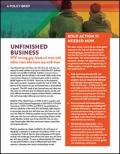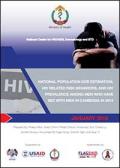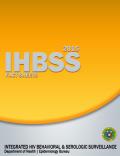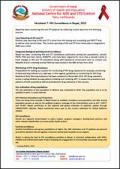Publications on Men Who Have Sex With Men (MSM)

Resource | Publications,
In Laos, LINKAGES is taking both fear of harassment and lack of access out of the testing equation for men who have sex with men (MSM) and transgender women in three communities. The project introduced a community-based model of HIV testing with OraQuick—a relatively new rapid oral HIV test that requires neither specialized equipment nor highly trained providers to administer it.

Resource | Publications,
Gay OK Bangkok was developed and launched by the Asia-Pacific Coalition on Male Sexual Health APCOM), a LINKAGES Thailand implementing partner, as part of their ongoing TestBKK campaign, which seeks to generate demand for MSM-friendly HIV testing services in Bangkok and around Thailand.

Resource | Publications,
Gay, bisexual men and other men who have sex with men are among the small number of groups for which the HIV epidemic remains uncontrolled worldwide. Inability to mount true-to fact responses that are tailored to the sexual health needs of our communities threatens to undermine gains made in reaching global targets set by UNAIDS.

Resource | Publications,
With approximately 31,000 MSM in Cambodia, a population considered at high risk for contracting HIV due to engagement in risky sexual behaviors, efforts to prevent, manage, and treat HIV in this population are essential for achieving the 3.0 initiative aimed at eliminating new HIV infections in the country by 2025. Accurate strategic information, such as population size estimation, measures of risk behaviors, and HIV prevalence among MSM, is imperative to better understanding the impact of this population on the nationwide HIV prevalence, designing effective interventions, and informing further studies.

Resource | Fact Sheets,
Compilation of the data on the 2015 Integrated HIV Behavioral and Serologic Surveillance among males/transgenders who have sex with males (M/TSM), freelance female sex workers (FFSW), male entertainment establishment workers (MEW), transgender women (TGW), injecting drug users (IDU) male and female in different locations.

Resource | Fact Sheets,
Nepal has been conducting HIV and STI surveillance particularly among key populations, namely: PWID, FSW and their clients, MSM/TG, and male labor migrants for more than a decade mainly to track changes in HIV and STI prevalence along with behavioral components such as condom use. Hepatitis-B and C screening among PWID has been started in the IBBS surveys from 2015.
The size estimation of key population in districts was conducted in 2010. The population size is to be updated in every 2-3 years interval.









